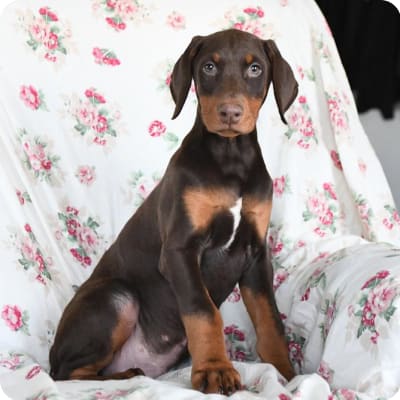Doberman Pinscher Puppies

The Obedient, Alert, and Confident Doberman Pinscher
The Doberman is large, muscular, and intelligent. They have a reputation for being aggressive, but if they are socialized early they are loving and affectionate. Their size, fearlessness, and intelligence make them great protectors and watch dogs.
Doberman Pinscher At a Glance




Doberman Pinscher At a Glance
- Size: 25"-27", 65-90 lbs.
- Lifespan: 10-13 years
- Energy Level: high
- Coat: Smooth and short
- Shedding: moderate
- Hypoallergenic: No
- Dog Group: Working
- Common Nicknames: Dobie, Doberman
Doberman Pinscher Breed Guide
Learn More About Doberman Pinschers


